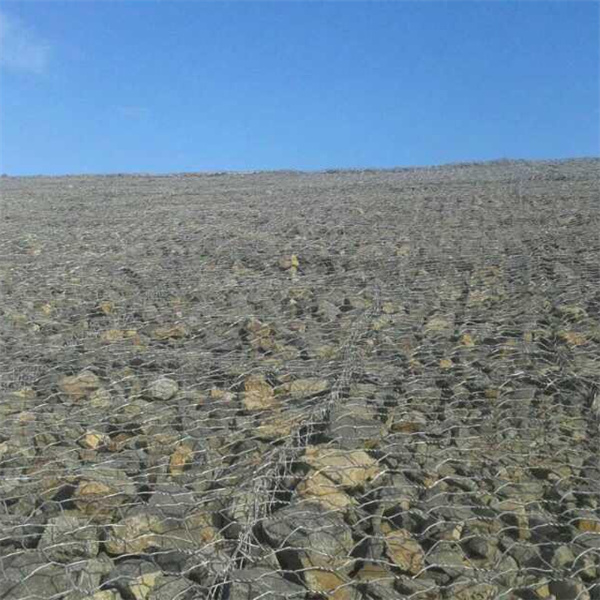Sep . 27, 2024 19:51 Back to list
Essential Tips for Maintaining Your Gabion Wall Effectively and Efficiently
Understanding the Maintenance of Gabion Walls
Gabion walls have gained immense popularity in civil engineering and landscaping due to their innovative design, durability, and eco-friendliness. These walls are constructed from wire mesh baskets filled with stones or other materials and serve various purposes, including retaining walls, erosion control, and sound barriers. However, to ensure their longevity and effectiveness, proper maintenance is essential. This article delves into the significance of gabion wall maintenance, best practices, and potential issues to watch out for.
Importance of Gabion Wall Maintenance
Regular maintenance of gabion walls is crucial to preserve their structural integrity and functionality. Over time, natural elements such as water, soil erosion, and vegetation growth can impact the stability of these walls. Performing routine inspections can help identify signs of wear or damage before they escalate into serious issues. Not only does proper maintenance extend the lifespan of gabion walls, but it also ensures they continue to effectively perform their intended functions.
Best Practices for Maintaining Gabion Walls
1. Regular Inspections Establish a schedule for inspecting gabion walls at least twice a year. Look for any signs of displacement, erosion, or structural damage. Inspect the wire mesh for rust or corrosion, especially in coastal areas where saltwater exposure is prevalent.
2. Refilling Material Over time, the stones within gabion baskets may settle or wash away due to heavy rains or flooding. It's vital to refill these baskets with appropriate materials to maintain the wall’s strength and design. Use the same type of stone originally used in construction to ensure consistency.
3. Vegetation Management While some vegetation can help reduce soil erosion around gabion walls, overgrowth can lead to structural issues. Regularly trim any invasive plants or roots that may undermine the wall’s foundation. Additionally, be cautious of large trees whose roots may destabilize the structure.
4. Drainage Maintenance Gabion walls often rely on proper drainage to prevent water buildup behind the wall. Ensure that drainage systems (like weep holes) are clear to prevent water retention, which can cause pressure and lead to failure. Regularly assess the surrounding area for blocked drainage paths that could lead to water pooling.
buy gabion wall maintenance

5. Repairing Damage If you identify any damaged areas during inspections, address them promptly. Repairing or replacing rusted wire mesh, re-stacking displaced stones, and reinforcing weakened sections can prevent more significant issues down the road.
Potential Issues to Monitor
While gabion walls are generally durable, there are common issues that may arise
- Erosion Heavy rainfall can erode soil around the wall, potentially destabilizing it. Look for signs of erosion in the surrounding landscaping. - Wire Corrosion Galvanized wire mesh is designed to withstand the elements, but over time, corrosion can occur. Inspect for signs of rust, particularly in areas that receive constant water exposure.
- Settling Gabion walls can settle unevenly if the underlying soil is not stable. Regular assessments help catch this issue early.
Conclusion
Maintaining gabion walls is a task that cannot be overlooked. With regular inspections and proactive care, these structures can last for many years and provide critical support in a range of applications. By understanding best practices for maintenance and being alert to potential problems, property owners and managers can ensure that their gabion walls remain strong and functional.
Overall, a well-maintained gabion wall not only contributes to the aesthetic and functional value of a property but is also an investment in environmental sustainability. Whether used in landscaping, flood control, or road construction, the care and attention given to gabion walls can dramatically impact their performance and longevity. By embracing a routine maintenance plan, you can confidently enjoy the benefits that gabion walls bring to your landscape.
-
Why PVC Coated Gabion Mattress Is the Best Solution for Long-Term Erosion Control
NewsMay.23,2025
-
Gabion Wire Mesh: The Reinforced Solution for Modern Construction and Landscape Design
NewsMay.23,2025
-
Gabion Wall: The Flexible, Seismic-Resistant Solution for Modern Landscaping and Construction
NewsMay.23,2025
-
Gabion Wall Solutions: The Durable, Decorative, and Affordable Choice for Every Landscape
NewsMay.23,2025
-
Gabion Basket: The Durable and Flexible Alternative to Traditional Retaining Walls
NewsMay.23,2025
-
Gabion Basket: The Proven Solution for Slope Stability and Flood Control
NewsMay.23,2025
-
Versatility of Chain Link Fence Gabion
NewsMay.13,2025






